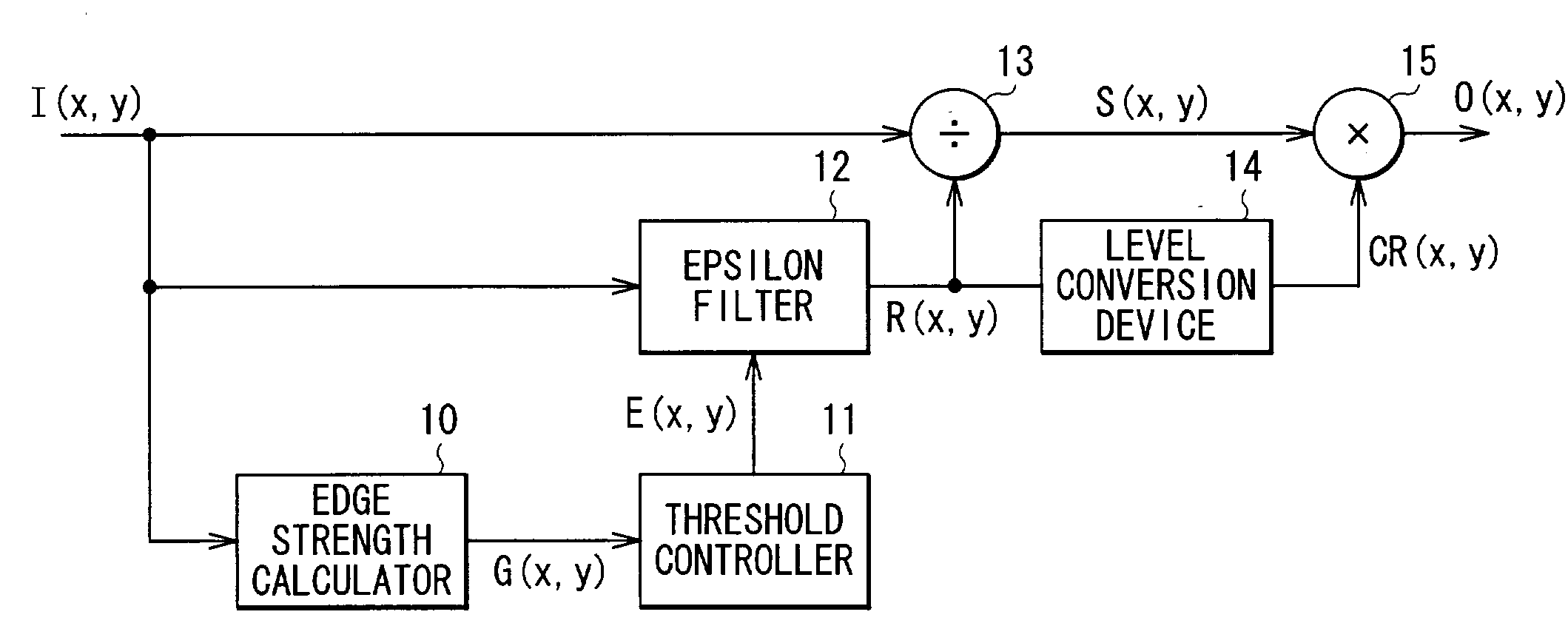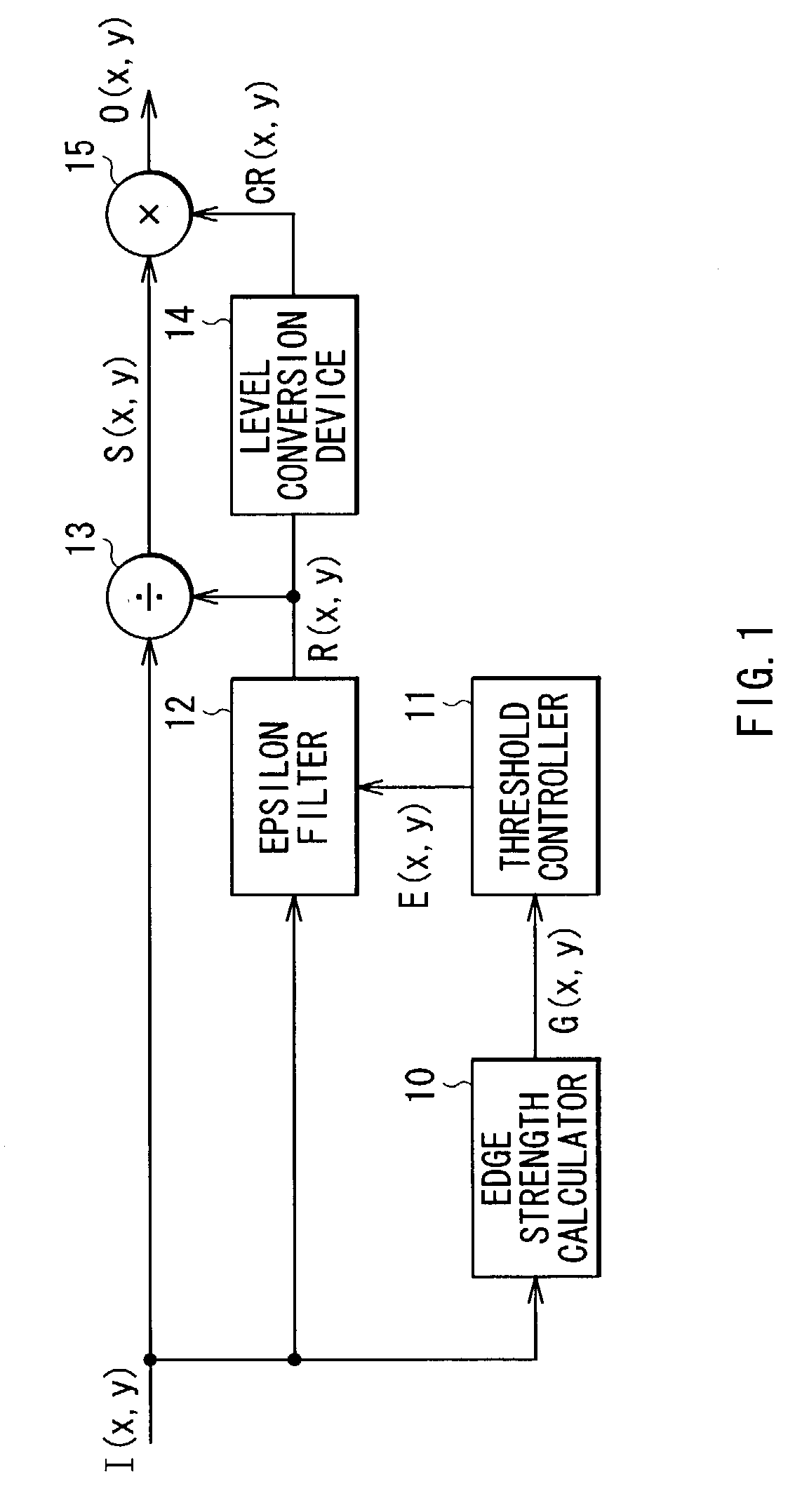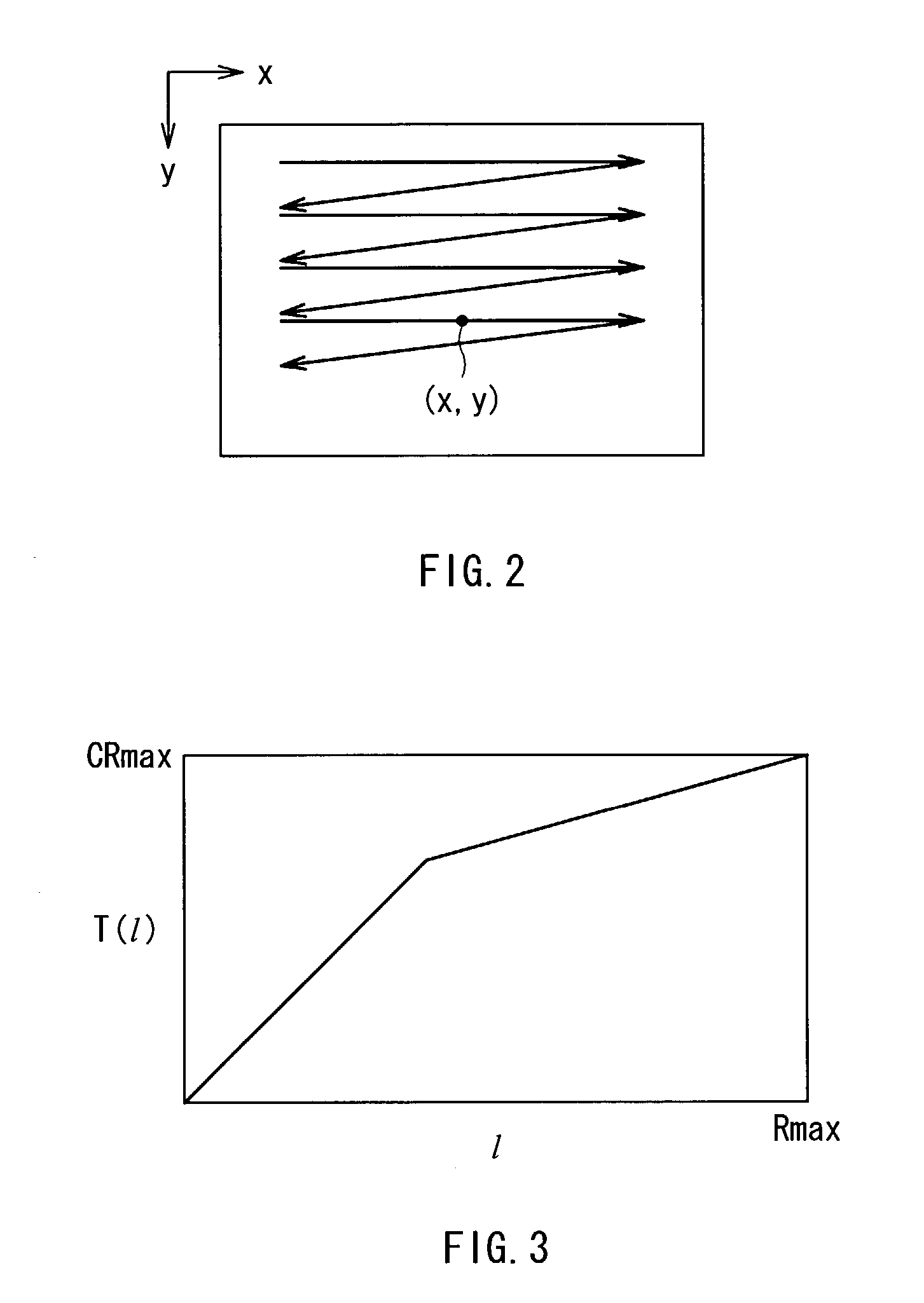Image processing method and image processing apparatus
a technology of image processing and illumination level, applied in the field of image processing method and image processing apparatus, can solve the problems of subjective undesirable noise, insufficient prevention of problems, and decline of contrast in other level ranges, so as to reduce the influence of illumination level on a change in pixel value, appropriately extract the
- Summary
- Abstract
- Description
- Claims
- Application Information
AI Technical Summary
Benefits of technology
Problems solved by technology
Method used
Image
Examples
first embodiment
[First Embodiment]
[0040]At first, an input image signal which is processed in an image processing apparatus according to a first embodiment of the invention will be described below. The input image signal processed in the image processing apparatus is a signal of a time-series pixel value obtained by scanning a two-dimensional digital image in a horizontal direction and a vertical direction in this order as shown in FIG. 2. In the embodiment, the pixel value corresponding to any position (x, y) on the two-dimensional image indicates I(x, y), and the pixel value is processed as an input image signal.
[0041]Next, a structure of the image processing apparatus according to the embodiment will be described below. As shown in FIG. 1, the image processing apparatus comprises an edge strength calculator 10, a threshold controller 11, an epsilon filter 12, a divider 13, a level conversion device 14 and a multiplier 15.
[0042]The edge strength calculator 10 has a function of calculating an edge...
second embodiment
[Second Embodiment]
[0111]Next, a second embodiment of the invention will be described below. In the description below, like components are denoted by like numerals as of the first embodiment and will not be further explained.
[0112]FIG. 12 shows a structure of an image processing apparatus according to the second embodiment of the invention. Although a general function of the image processing apparatus according to the embodiment is the same as that according to the first embodiment, it is distinguished from the first embodiment by the fact that in the embodiment, instead of the divider 13 and the level conversion device 14 (refer to FIG. 1), the image processing apparatus comprises a coefficient calculator 16 having functions of the divider 13 and the level conversion device 14. In other words, in the embodiment, the dynamic range is compressed on the basis of Mathematical Formula 16 described in the first embodiment.
[0113]In the embodiment, the coefficient calculator 16 calculates ...
third embodiment
[Third Embodiment]
[0116]Next, a third embodiment of the invention will be described below. In the description below, like components are denoted by like numerals as of the first embodiment and the second embodiment and will not be further explained.
[0117]FIG. 14 shows a structure of an image processing apparatus according to the third embodiment of the invention. Although the structure of the image processing apparatus according to the embodiment is substantially the same as that according to the first embodiment (refer to FIG. 1), it is distinguished from the first embodiment by the fact that in addition to the edge strength G(x, y) which is the output from the edge strength calculator 10, the pixel value I(x, y) of the input image is directly inputted into the threshold controller 11.
[0118]In the embodiment, a threshold controller 11A controls the threshold E(x, y) used in the epsilon filter 12 in a subsequent stage by not only the edge strength G(x, y) but also the pixel level of...
PUM
 Login to View More
Login to View More Abstract
Description
Claims
Application Information
 Login to View More
Login to View More - R&D
- Intellectual Property
- Life Sciences
- Materials
- Tech Scout
- Unparalleled Data Quality
- Higher Quality Content
- 60% Fewer Hallucinations
Browse by: Latest US Patents, China's latest patents, Technical Efficacy Thesaurus, Application Domain, Technology Topic, Popular Technical Reports.
© 2025 PatSnap. All rights reserved.Legal|Privacy policy|Modern Slavery Act Transparency Statement|Sitemap|About US| Contact US: help@patsnap.com



